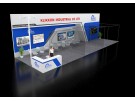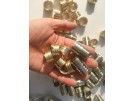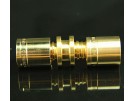Tech News
You can't use an acute inside angle on a forging, you would never be able to get the part out of the mold. So all inside corners must be wider than 90 degrees, and have radiused edges (if you had a die (mold) that tried to form a sharp corner, it would cut rather than push the metal into place. CNC doesn't impose such restrictions, though to get nicely radiused corners, you might have to change tools, to make the last pass. (you use a flat tool to get rid of the bulk of the metal over the flat areas, and use a round nosed tool to form the inside radius where needed.) So eliminating stress risers means more expensive machining time. 
So why CNC at all? Well its good at making small numbers of compicated shapes. In fact, they are just the thing to make the molds (called tools and dies) to do your forging in. (As a result, CNC technology has in fact lowered the "tooling" costs associated with forging!) It got its biggest boost from the missle folks. If you only plan to build 30 of something, CNC is just the thing for parts with a complicated shape, like that landing gear strut on that fighter. The peace dividend left a bunch of shops with excess CNC capacity. Since the cost of the machine "just sitting idle" can easily be over half what it costs running full out on a billable job, it was find something for it to do, or the bank may be calling the auctioneer. They cast around for things that would get some money in to make the lease payments. Boutique bike parts and other things, where "rocket science" adds enough marketing appeal to overcome CNC's inefficencies, were something these shops latched onto. (for others, take a look at golf clubs or mototcycle and car hop up parts)
For more information,please contact with Klikkon team












